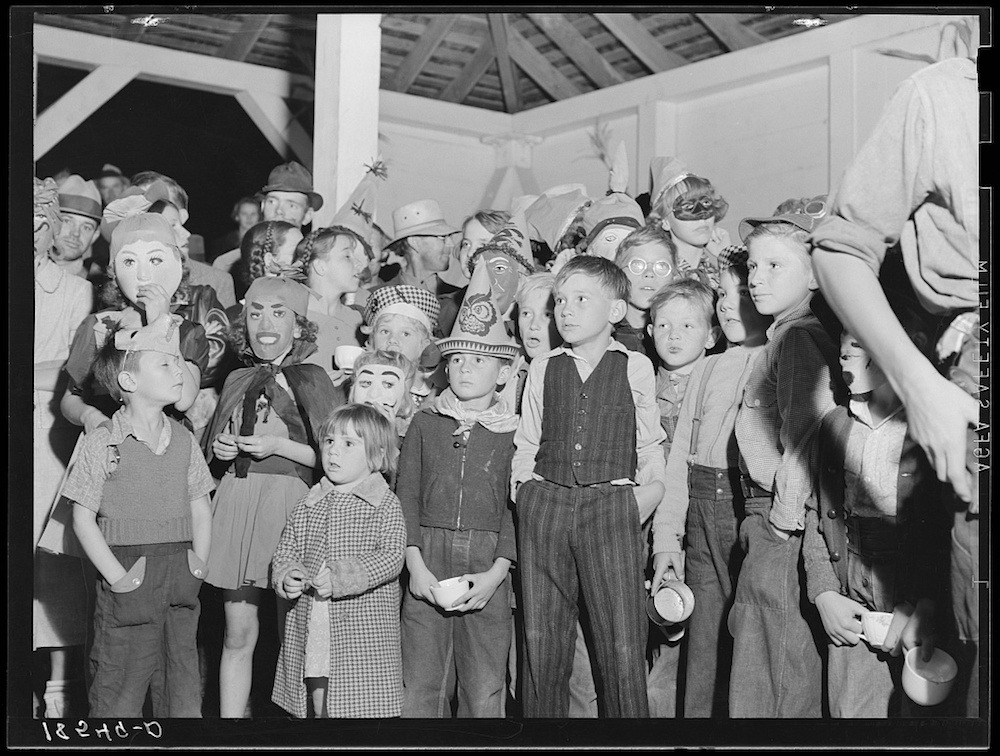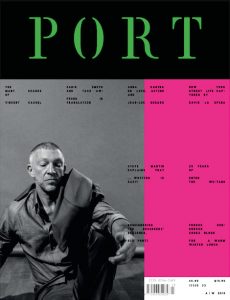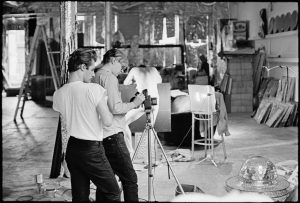Port’s director of photography, Max Ferguson, analyses an iconic piece of New Deal propaganda from documentary photographer Dorothea Lange

Shot in 1938 by heavyweight photographer Dorothea Lange, this picture shows a barn packed with children celebrating Halloween at the Shafter camp for migrant agricultural workers, in California. The boys are in their Sunday best. Some of the girls are wearing homemade fancy dress and masks. Most of the children are looking at something beyond the frame – perhaps at the blackface musicians we see in another image in the series.
One boy, however, peering through his round spectacles, is straining to see above the other children’s heads. He’s looking straight at the camera, and therefore at us, bewildered. A child of the American dust bowl, he is unlikely to have seen a camera like Lange’s expensive large-plate Graflex before; but he also seems to be questioning the viewer: Why are you looking at us?
Though the people at Shafter camp don’t know it yet, they have been made a part of something bigger: poster girls and boys for a new, modern form of capitalism that would come to define the post-war West.
From the mid-’30s until the early ’40s, dozens of photographers were sent to the poorest parts of America by the Farm Security Administration to document the consequences of the Great Depression. President Roosevelt badly needed support for his New Deal reforms and employed image-makers to provide potent portrayals of a desperate, rural America. These photographers – Lange, Walker Evans, Gordon Parks, to name the best known – are held in high esteem as documentary photographers as a result of their work, and they contributed greatly to defining the photographic discourse around the subject.
Across the Atlantic, other governments, notably in Germany and the USSR, were sponsoring artists to create favourable depictions of their regimes. But although the FSA images are not favourable, they are still part of Roosevelt’s campaign to force liberal capitalism to renew itself. To deny that the New Deal photographs, as they came to be known, are anything but propaganda does a disservice to their power.

This article is taken from issue 23. To buy the issue or subscribe, click here.




